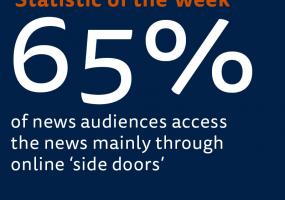Measuring the reach of "fake news" and online disinformation in Europe
06 Feb 2018
In this factsheet by Richard Fletcher, Alessio Cornia, Lucas Graves and Rasmus Kleis Nielsen, we provide top-level usage statistics for the most popular sites that independent fact-checkers and other observers have identified as publishers of false news and online disinformation. We focus on two European countries: France and Italy. We examine France and Italy as two particularly important cases, as both are widely seen as facing serious issues with for-profit and ideologically/politically motivated online disinformation.
We find that:
- None of the false news websites we considered had an average monthly reach of over 3.5% in 2017, with most reaching less than 1% of the online population in both France and Italy. By comparison, the most popular news websites in France (Le Figaro) and Italy (La Repubblica) had an average monthly reach of 22.3% and 50.9%, respectively;
- The total time spent with false news websites each month is lower than the time spent with news websites. The most popular false news websites in France were viewed for around 10 million minutes per month, and for 7.5 million minutes in Italy. People spent an average of 178 million minutes per month with Le Monde, and 443 million minutes with La Repubblica—more than the combined time spent with all 20 false news sites in each sample;
- Despite clear differences in terms of website access, the level of Facebook interaction (defined as the total number of comments, shares, and reactions) generated by a small number of false news outlets matched or exceeded that produced by the most popular news brands. In France, one false news outlet generated an average of over 11 million interactions per month—five times greater than more established news brands. However, in most cases, in both France and Italy, false news outlets do not generate as many interactions as established news brands.
We have shown that many of the most prominent identified false news websites in these countries are far less popular than major established news sites. However, the difference between false news sites and news sites in terms of interactions on Facebook is less clear-cut. We believe that online disinformation is an important issue that the public, publishers, platform companies, policymakers, and other stakeholders should pay serious attention to. But overall, our analysis of the available evidence suggests that false news has more limited reach than is sometimes assumed.




